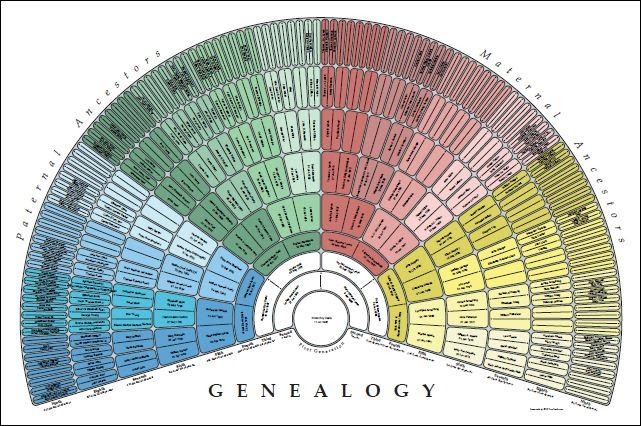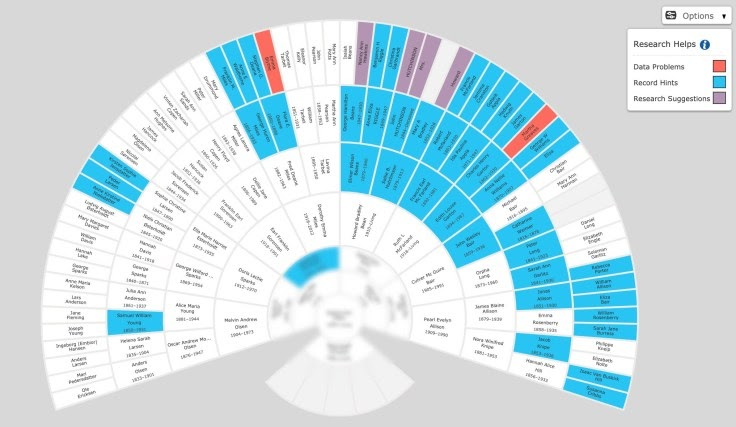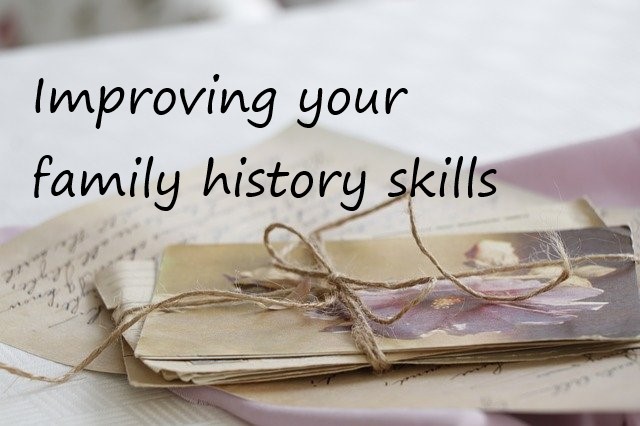

Come, Follow Me is a resource offered by The Church of Jesus Christ of Latter-day Saints. It is designed to be used in the home to support personal and family scripture study to build faith in Heavenly Father and His plan of salvation and in the Savior Jesus Christ and His Atonement. Come, Follow Me is self-contained and adequate, when used properly. Products and materials designed to supplement this resource, though they may be helpful in some instances, are not necessary for a successful home study program.

Enoch’s efforts are a pattern for building Zion in our own lives.
From Come, Follow Me:
Because Moses 7 is a record of how God’s followers successfully built Zion, it can instruct and inspire us today as we strive to do the same.
"When you research your family's history it is important to keep track of patterns and parallels that you observe in your ancestors' lives. By using some of the tools [timelines, map plotting and spreadsheets] ... you will be able to keep track of your ancestors and make certain that you have the right people in your family tree." (Tracking Patterns and Parallels - FamilySearch)

"Using a timeline to keep track of events in your ancestor's life will help you in your search for your ancestor's records. If you find that your ancestor is frequently switching from one county to another, during that same time period, you may have a case of two people with the same name. Timelines may also help you realize new record sets that you can search. When you plot each document on a timeline you will be much better able to establish an ancestor's identity." (Tracking Patterns and Parallels - FamilySearch)
You may also want to review 2020 Come, Follow Me Companion Lesson 45 for additional activity ideas on timelines. Creating Ancestor Timelines from The Family History Guide Blog shares ideas on how using a timeline can help move your research forward.


"Plot the locations where your ancestor had records made. Sometimes we assume that just because a record has our ancestor's name that it is their record. But, when the locations are plotted on a map we discover that the location of a record may be outside the probable area in which our ancestor lived and created records ... Mapping also helps to establish associations with other potential relatives. There is a good chance people living close to your ancestor were relatives. When you plot the area around your ancestor's residence you will be able to see relationships between your ancestor and his or her neighbors." (Tracking Patterns and Parallels - FamilySearch)
On a Person page for one of your ancestors in FamilySearch, find "Time Line" below the Name header. Click on "Time Line." You will see your ancestor's information formatted in a timeline with a map of those events to the right. (You may need to click on "Map" if the map is not currently appearing. For more information on navigating the "Time Line" menu, see Family Tree Person Page Update. You can also see eight historical events on your ancestor's timeline to see what they may have been experiencing at the time. Read Timeline and Map in Family Tree for more information on using the map feature.
Spreadsheets

"Using a spreadsheet will allow you to look at several pieces of information about an ancestor at the same time. Spreadsheets are particularly helpful in genealogical questions concerned with the identity of your ancestor. With the use of a spreadsheet you can look across multiple people's records and find patterns that you may have missed if you did not use a spreadsheet." (Tracking Patterns and Parallels - FamilySearch)
Do you have any ancestors that are difficult to identify because of other individuals with the same name who live in close proximity to each other? Use a spreadsheet to list information and record information for each person to help you distinguish one individual from another.
Genealogy Research Forms from the FamilySearch Wiki can also help you organize your family history research.
From Come, Follow Me:
As your family reads Moses 7:59–67, try marking or noting things the Lord tells Enoch about the last days—for example, that God will “gather out [His] elect” (verse 62) and that there will be “great tribulations among the wicked” (verse 66). How can we have faith and hope despite the wickedness in the last days? As part of this discussion, consider reading these words from Elder Ronald A. Rasband: “Take heart, brothers and sisters. Yes, we live in perilous times, but as we stay on the covenant path, we need not fear. I bless you that as you do so, you will not be troubled by the times in which we live or the troubles that come your way. I bless you to choose to stand in holy places and be not moved. I bless you to believe in the promises of Jesus Christ, that He lives and that He is watching over us, caring for us and standing by us” (“Be Not Troubled,” Ensign or Liahona, Nov. 2018, 21).
"You…were sent to earth at this precise time, this most crucial time in the history of the earth, to help gather Israel ... There is nothing happening on this earth right now that is more important than that. There is nothing of greater consequence. Absolutely nothing. This gathering should mean everything to you. This is the mission for which you were sent to earth. (Worldwide Devotional for Youth)


Preparation: Gather 11 photos of different family members doing different activities in different places.You can include some pictures of grandparents and other relatives if you choose. Do not include a photo of one participating adult (so as not to hurt the feelings of children). Hide the 11 photos in different areas of the room. If you want to let children run around a little more to get rid of some energy, you can place pictures in a larger area, such as the entire home or a church.
Activity: Take some time to explain and discuss The Gathering of Scattered Israel. After your discussion, tell your family that you have scattered your family (photos) and would like them to help gather them (the photos) together. After all the pictures have been recovered, lay them out to see them all. Ask them if all the family has been gathered together, and lead them to discover the missing person. Discuss what it would be like to not have everyone in the family together. Discuss what you can do to help gather Israel so none of your ancestors are “missing.”
Here are some ways to find those who need ordinance work done (sign up for a FamilySearch Account first):


Who in your family may need to be gathered? Review your fan chart on FamilySearch. The fan chart is a great tool to give you an overview of your family tree on one screen. What "empty" boxes do you find? Change to different ancestors and see if any empty boxes appear. Make notes of them. As a family, discuss what you might do or with whom you may seek help to see if you can find these ancestors. Pray for guidance. Set some smart goals to succeed. (The fan chart defaults to the fan chart of the individual who logged on to FamilySearch. To start the fan chart with someone else, simply find that person on your fan chart and click that person's name, and then click the Tree link that appears in the box.)
Kathryn Grant gives instructions for How to Find Ancestors in Need of Temple Work in the Family Tree using the fan chart.


Develop Search Skills
The better your search skills, the more time you are likely to spend looking in the right places, and the better the results. See Search Skills - The Family History Guide.